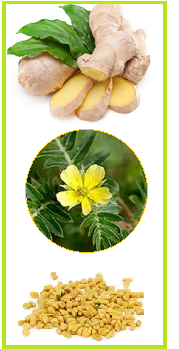As long as we are changing diapers, we know. But do we know what it means – how often, and the consistency? It is a primary signal of baby or child — or adult health factors. Knowing your young or even older child’s bathroom habits will help so much to protect their health and happiness. Really.
In all imbalance types, Ayurveda can offer simple easily understood guidance using properties of lifestyle and food. Today we talk about what is mostly the first type, showing some strength in her constitution to the third.
There is much which can be said, and FYI, the quality of bowel movements are categorized in three general ways:
- hard – dry, rough, this may be even pellet like. Not as frequent; ie, constipated. This is not healthy, not comfortable, and often accompanied by gas, bloating and or painful spasms (colic in young ones), even bleeding. This is a sign of excess Vata dosha (the functional effect of air and ether elements combined).
- watery or loose – frequent through the day mustardy yellow cottage cheesey curds are normal and healthy for baby. When older, or if it becomes green, mucousy or really wet, be concerned about loss of minerals as well as dehydration and give electrolytes, as well as consulting your doc or midwife. This often happens with flu or other infection. Loose but not runny wet diarrhea is a sign often of high pitta (functional combination of fire and water elements), candida perhaps, or other parasites can give this also.
- well formed, full, firm but soft – this is good. This is a sign of good kapha usually (functional combination of earth and water elements), unless there is mucous in it, then kapha is in excess. Kapha’s constipation is just slower and more difficult though not usually painful.
After other foods besides breast milk are added – formula or “solids” – it becomes thicker, smellier, etc, and commonly because the “solids” or formula are introduced without proper culturing of baby’s digestive system (no blame here, you didn’t know!) constipation and bad odor are both very common. Mamas eating constipating foods will also give this tendency to newborn babies. If baby’s prakruti (and vikruti) ie, genetic/body type makeup and imbalances are more fragile type than mama’s, it will show more in the little one.
For this mama who asks:
My 18 month old gets constipated. Had a weekly bm as an infant. Now it’s every 2-3 days. But I sense she is uncomfortable as it is too long. What do you recommend? I was thinking oil into the rectum? Almond oil?
She has no trouble with a bm once she starts having one. She is simply backed up. Her stool is often hard but not like pellets, actually rather large and typically with no foul odour.
Its just that there is no regularity and now that she is speaking if she does not go daily she can tell me she is not comfortable and has to go.
Pay attention to these simple words in your baby’s life: Constipation is dry, rough, harder and lighter than more moist and oily stool. There is a tendency to feel more cold, although in some cases it may be that mama takes too many herbal digestives and digestion/absorption is extra sharp. Let’s start with emphasizing more moisture, smoothing textures, warm, heavy and oily qualities in foods and environment to start creating balance.
Warm oil baby massage is proven to help.
Diet is also very important. Your 18 month old will be eating other foods. It is a good sign that there is no foul odor, and that once the bowel moves it is not painful for Baby. However, a long term habit of only once or 3 times a week indicates long term imbalances. She is little enough, it may correct pretty easily with dietary modifications.
Reduce dry, rough, light foods like toast, crackers and cheerios and thick, hard to digest cheeses and meats. Soups and softly cooked moist things from veggies to simply prepared puddings are good, freshly cooked, rather than from a jar or leftover the next day. Cook rice, cereals etc with extra moisture and add fats and a bit of gentle spicing to her foods. All these things can be contributing to or reversing constipation. Definitely avoid corn – any non organic corn is pretty guaranteed to be genetically modified (see the movie online, Genetic Roulette for a real heads up).
Not knowing more about maternal or baby’s diet, I would advise not only the usual of making sure warm water is given the baby 1/2 – 1 hour after eating (can be made with very weak fennel tea, maybe 1/8 tsp seeds boiled 5 minutes in two cups of water – make fresh daily). Add to baby’s food clarified butter, sometimes coconut oil if it is not winter, sesame or olive oil to baby’s food (vary them, not together). Avocados are probably already part of her diet? If at 18 months she is getting nut butter, thin it with water quite a bit, and perhaps add a little of the dark “highest lignin” flax oil to it, maybe 1/2 tsp per serving.
Begin each new food about 1 week apart, and include some “middle of the road” spices to ensure good digestion of food including the fats. Cumin, coriander, turmeric, fennel, dill, caraway, cinnamon, pinch cardamom, a little cooked garlic even, all can be used (2 or 3 at a time not all at once). No nutmeg when bowels are slow. Commonly people give such bland foods and without fats to babies. Spices help transform food and support good appetite and digestion. Baby has been getting them through mama in utero, and through breast milk. Why stop?
Good fats have so many virtues. It is another topic, but please note, they beneficially lubricate while nourishing and stabilizing long burning energy! Early postpartum mamas are advised to ingest extra of these good fats, for both their own comfort and rejuvenation, and for rich nourishing and balanced breast milk. Baby and mama will do very well without uncomfortable laxatives by including more warmth, oilness, moisture, and also moist slippery quality of foods. So, stewed dried fruits, which are rich in fiber, iron and muscle building nutrients, are also decidedly slippery and help things move through. A bit of cinnamon or tiny pinch of clove is great to include therein.
Newborns on breast or bottle only benefit greatly in my practice by a fingertip (or nippletip) of organic clarified butter several times a day also, for constipation.
If the case is more severe, rub a little of this or castor oil on anus to relax (remember, warm!). If none of these things work, you can give very small oil enema – using bulb syringe, maybe a tablespoon at most of one of the above, or yes, almond or sesame oil can be used. Avoid sesame in summer with babies prone to rash. The oil not only lubricates the bowel, it loosens chronically caked stuff, gently, and also nourishes the body through this amazing organ, the colon. I have seen mamas not infrequently, given 1/3 cup enema of warm sesame oil, retain the whole thing at night and absorb all or most of it.
We live in a culture dedicated to low fat everything after some misreading of a research study several decades ago, reports Sally Fallon in the amazing first chapter of her cookbook, Nourishing Traditions. I have the cookbook – don’t use the recipes personally, but want all my students to read the first 80 pages. She has done a great service with the corrections to many dietary beliefs, and has documented it very well. Let’s look again!
Some oils penetrate all 7 tissues and can nourish through the skin, like sesame oil, as Dr. Vasant Lad explains in depth about the qualities and actions of different oils on each tissue in his comprehensive Textbook of Ayurveda, Volume 3. Warm oil massage on baby with sesame oil will nourish all 7 tissues and help re-oleate Baby. Warm oily clockwise circles on baby’s tummy, damp heat on the abdomen, and simple knees to tummy ankle/leg presses will really help too. Do any leg “bicycles” slowly, not too fast, to allow mind-body connection, integration and coordination to be cultivated.
Although you can give your baby a little temporary increase in oil, even 1/4 tsp of castor oil or a little oil enema and get things moving, it is so important to tend to the cause and change it before layers of complication cascade. You will thank yourself for taking the time and your child will so benefit, all their life, from this good start.
Prompted by this mama today, let’s summarize a few important things:
- Contrary to what most docs will say, if baby doesn’t go at least daily, it is not healthy.
- It may be common, “normal, but you can see, Baby is not comfortable!
- Older kids may be grumpy and not know why.
- Younger or older kids with chronic constipation will begin to unfold layers of the disease process from the backed up toxins, dryness, hardness, discomforts…. it may manifest as GI tract stuff or migrate into headaches, skin problems, even nervous system problems (that is not a comprehensive list, just a few notes!) If these get treated symptomatically rather than identifying the root cause, those will continue also as chronic problems….
- Long term chronic patterns can begin with imbalance from birth.
- If it is chronic, it is more difficult to turn around and the effects may be more serious.
OK, I’m not trying to scare anyone, just want you to give yourself maybe needed motivation to make some changes. It usually means dietary and lifestyle changes. It’s worth it.




